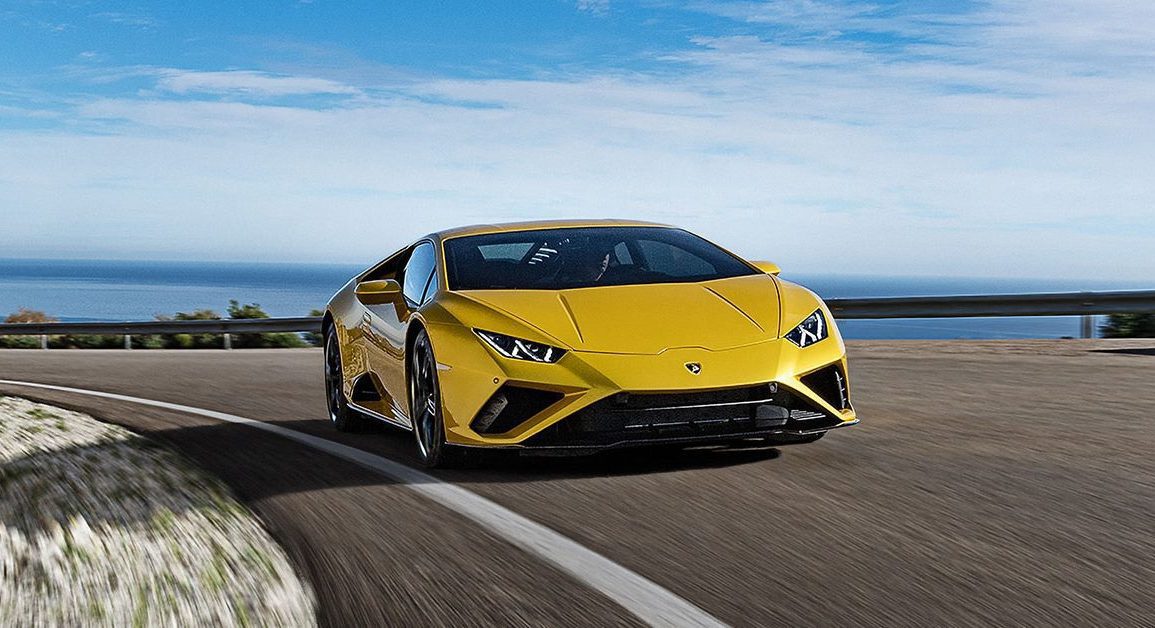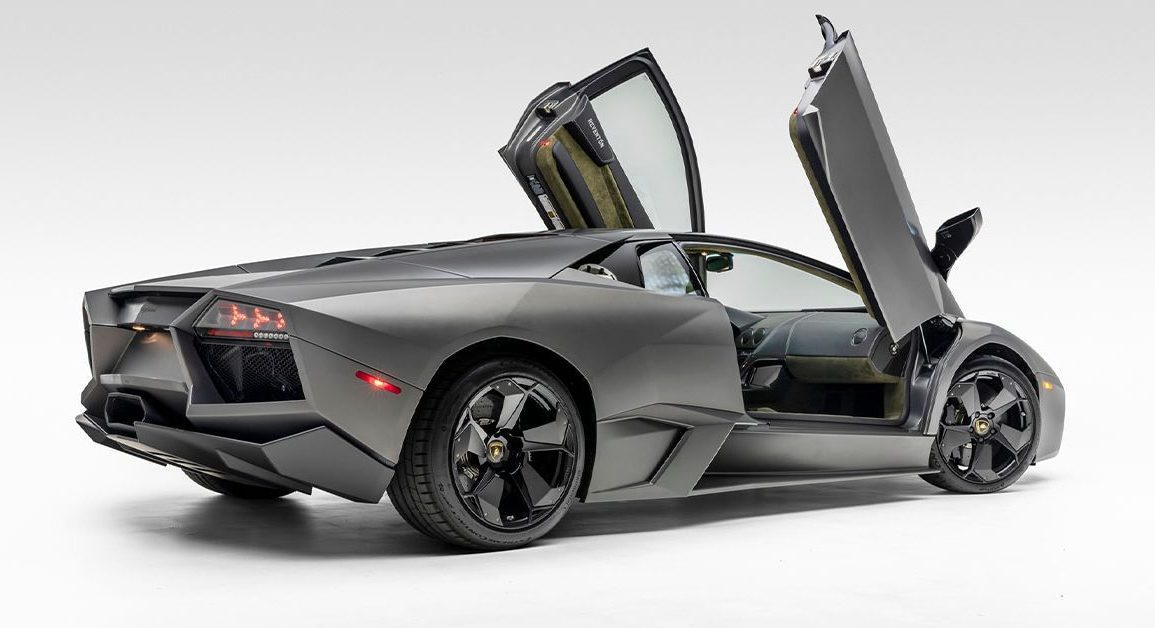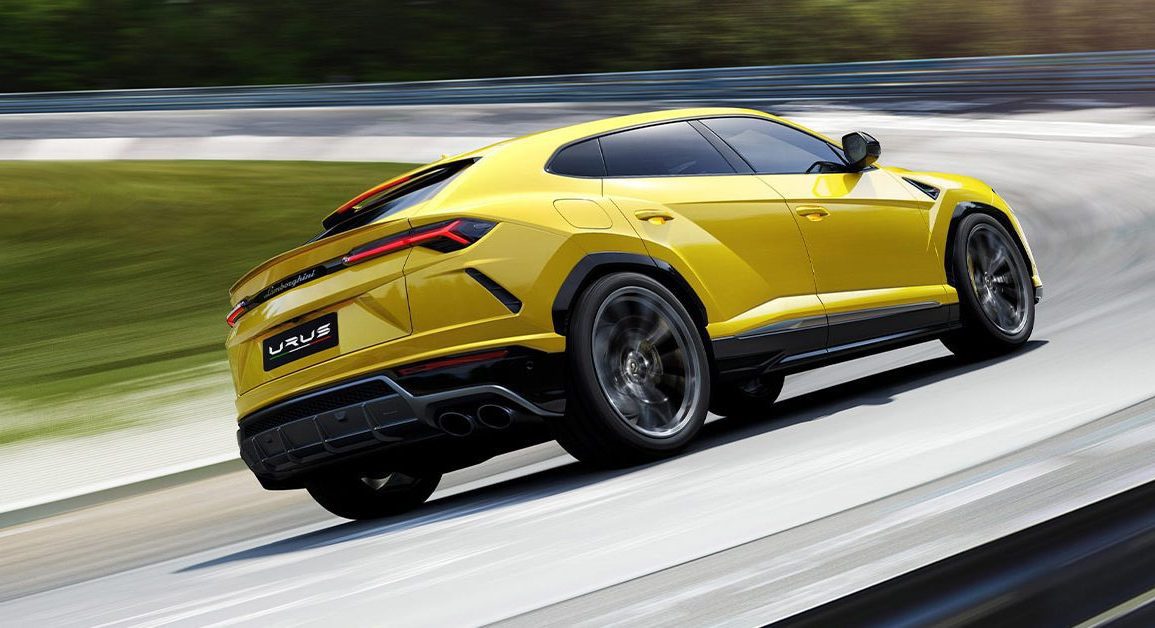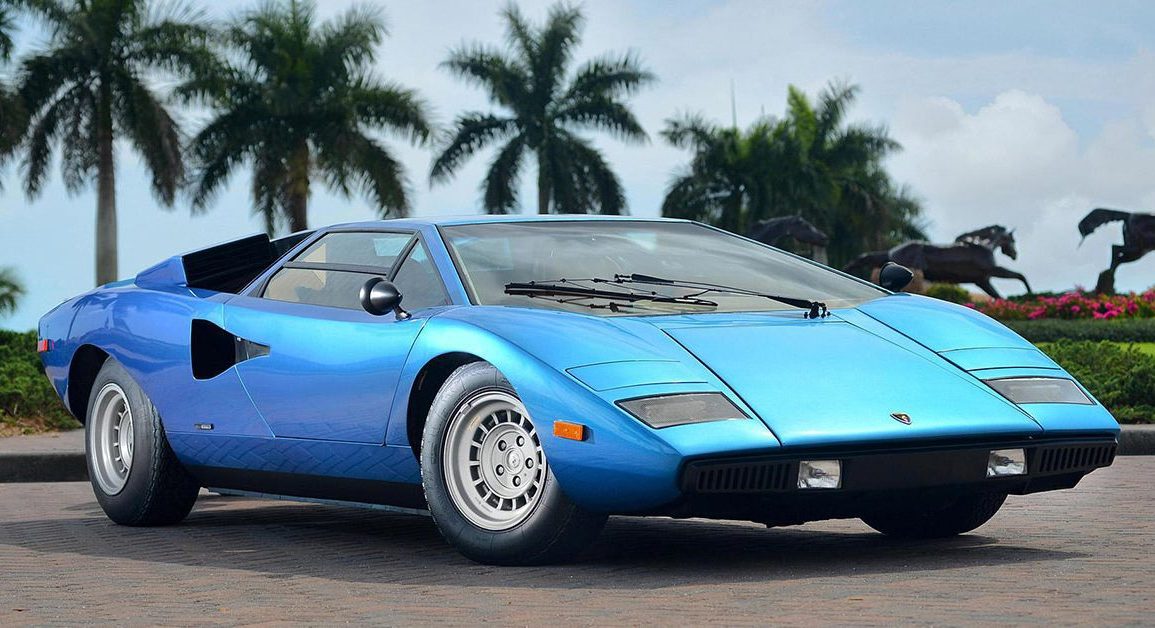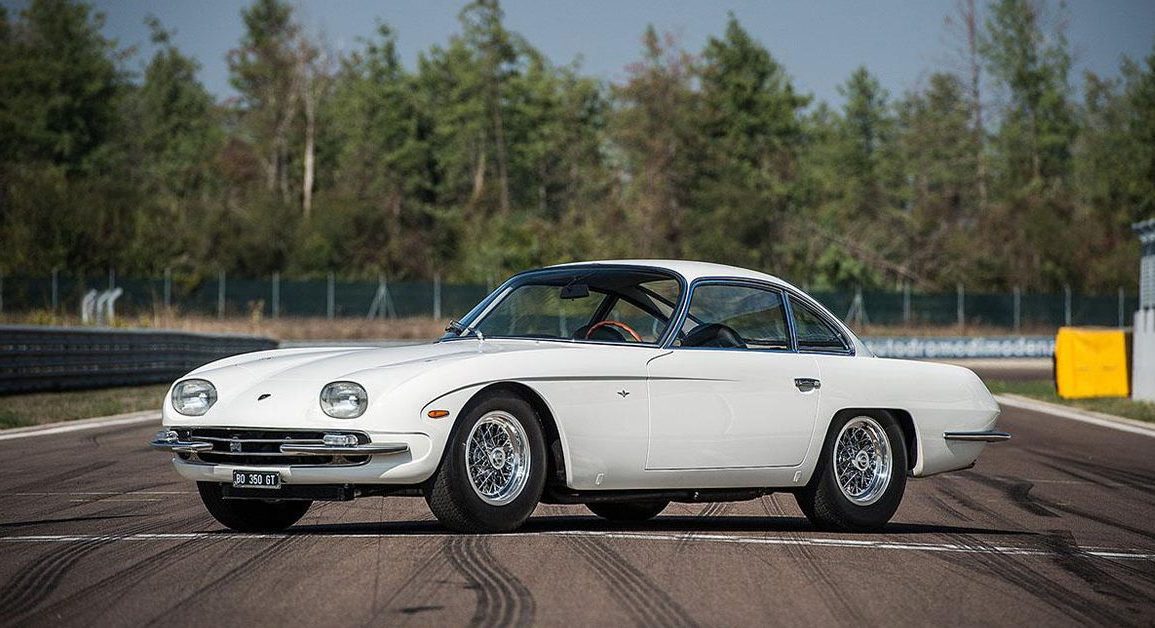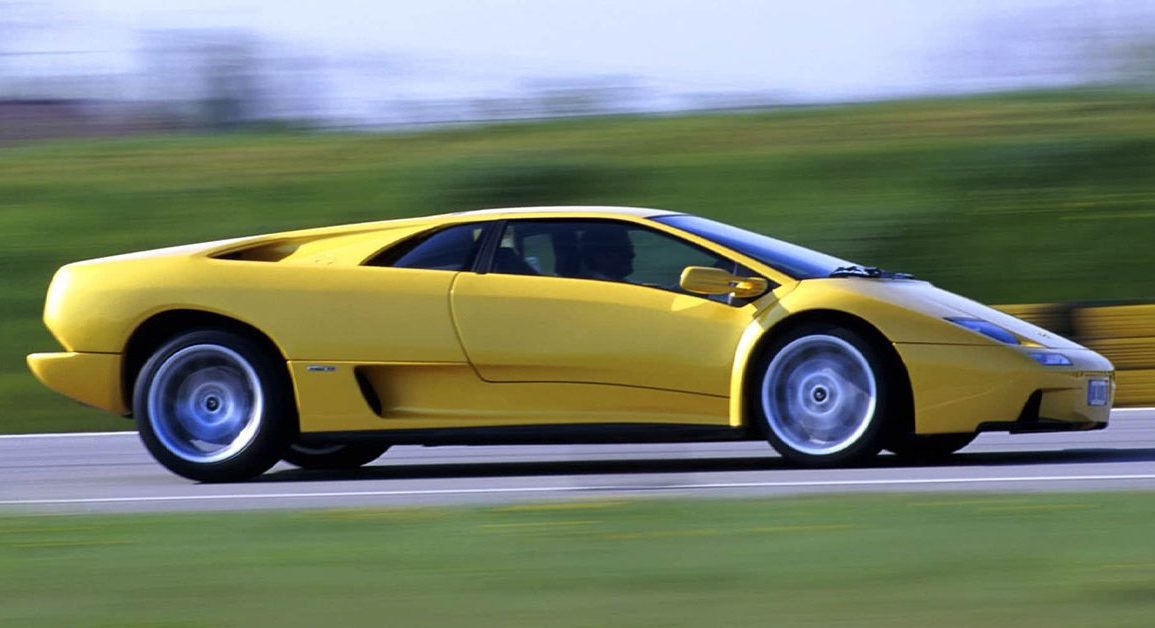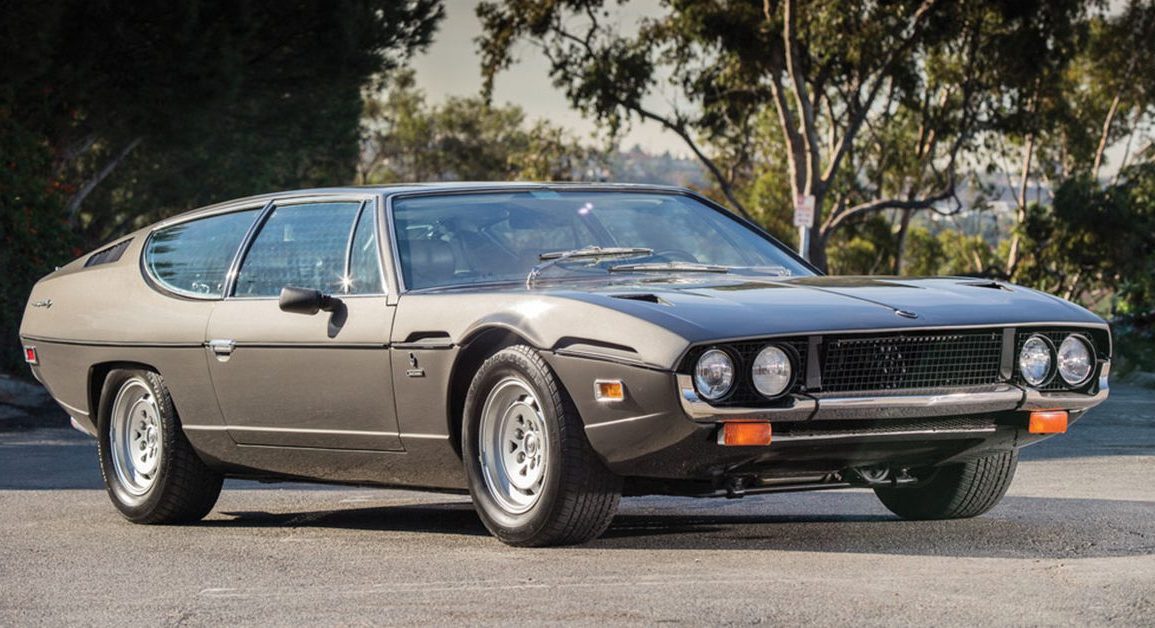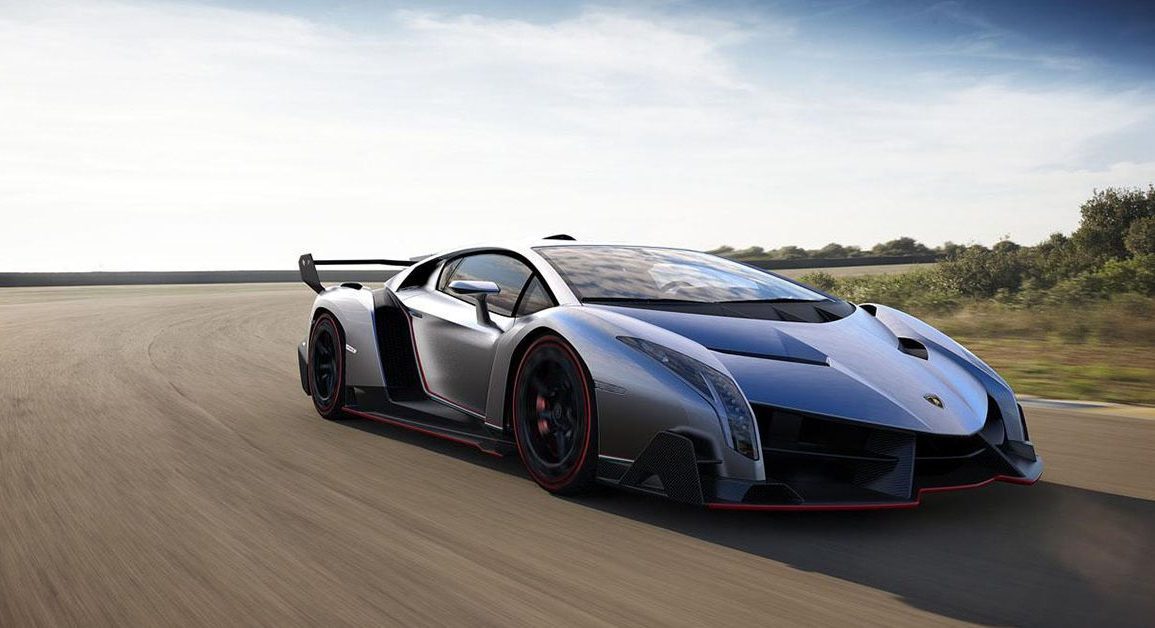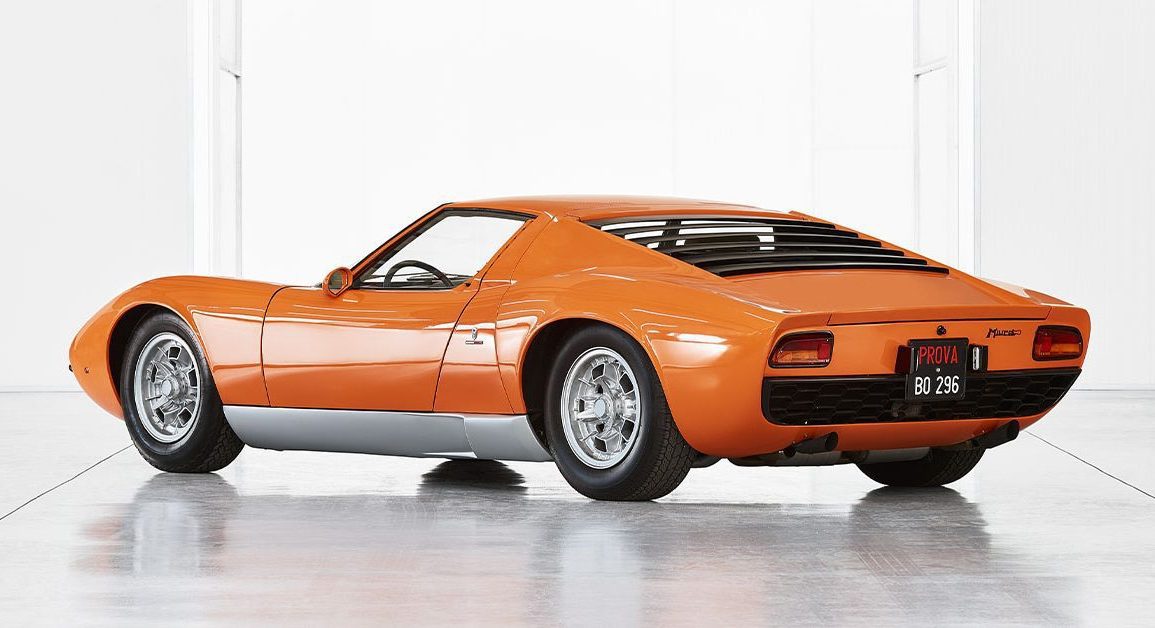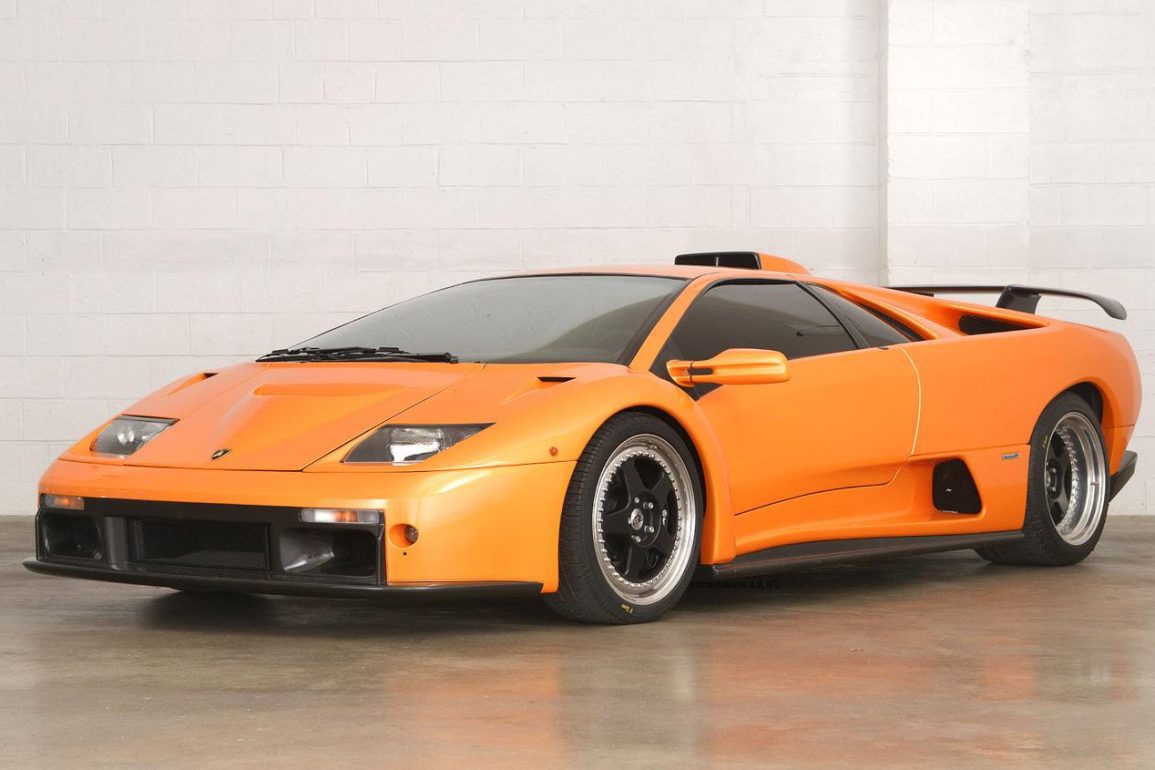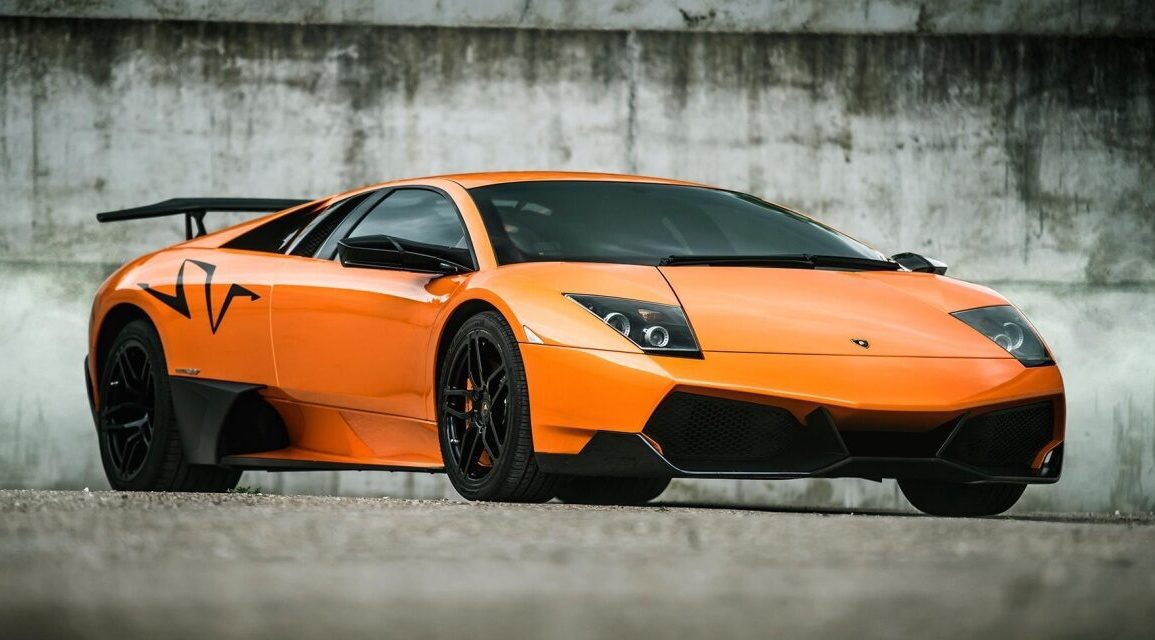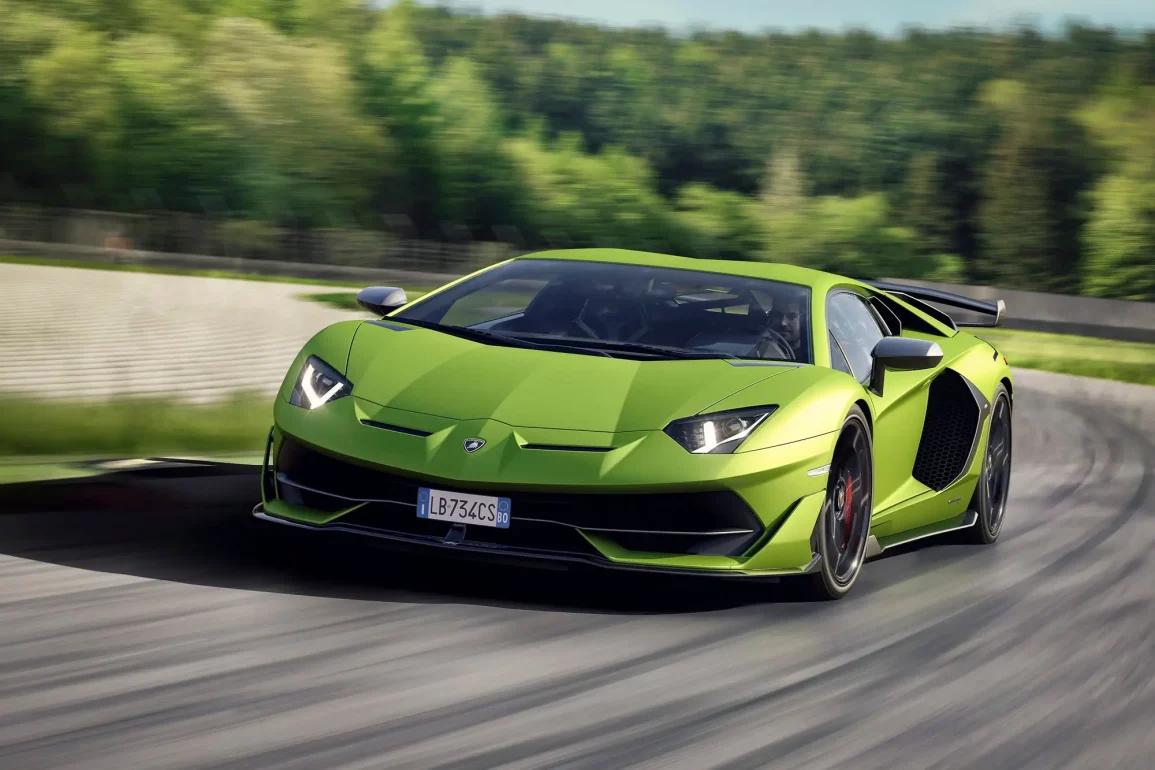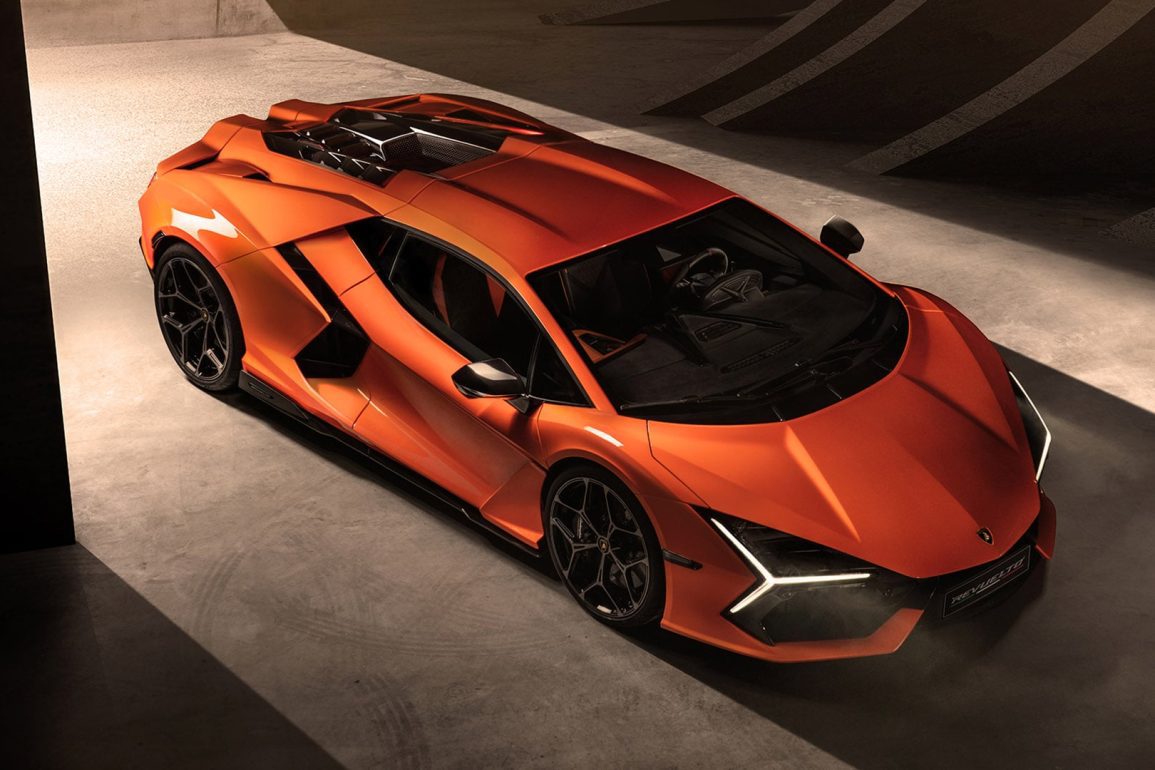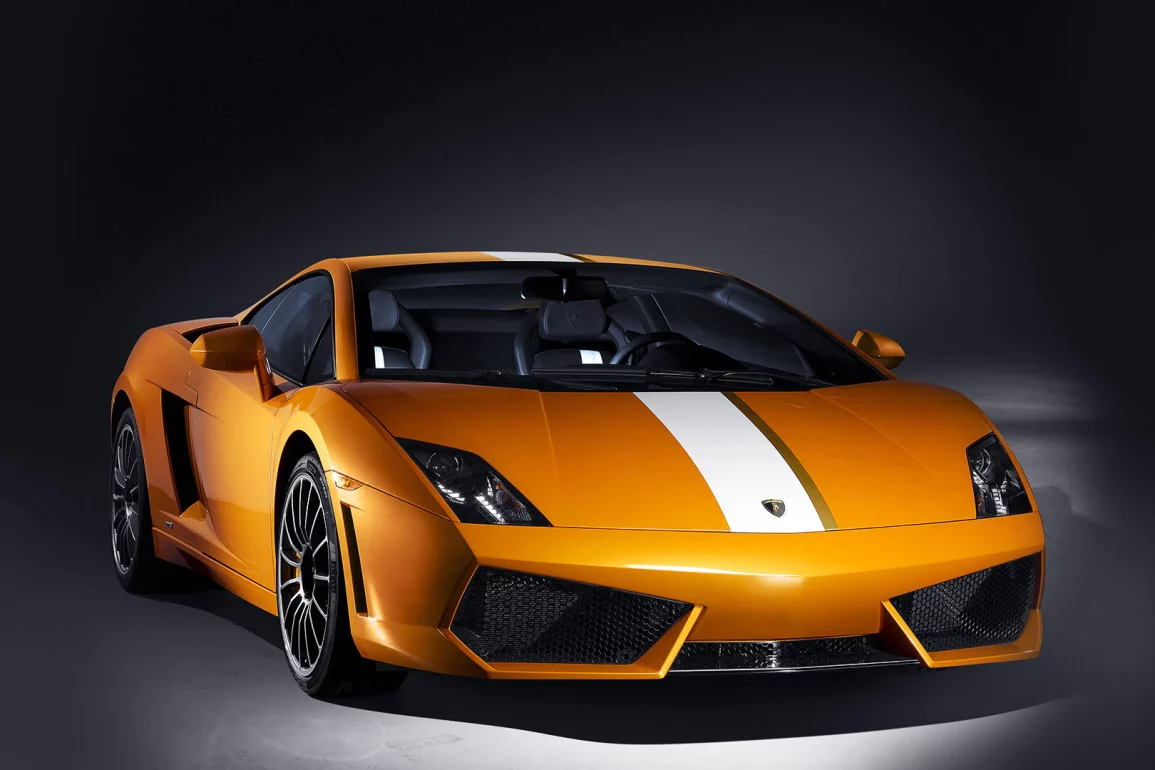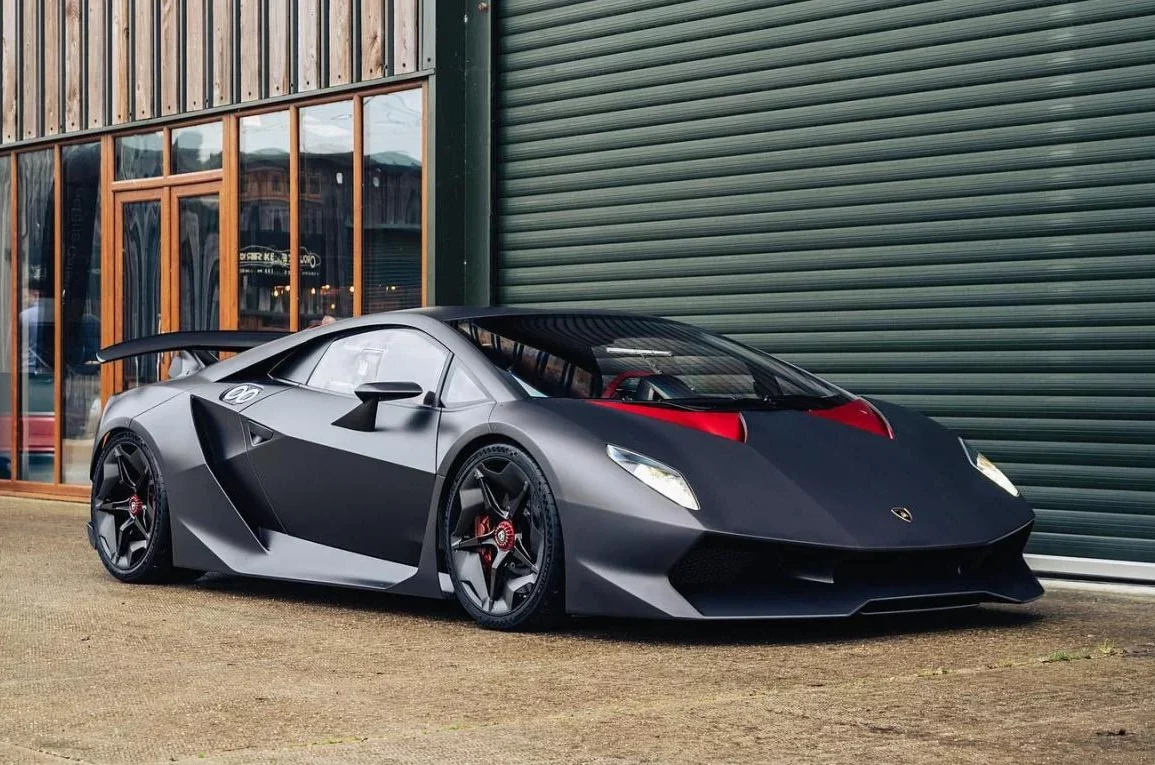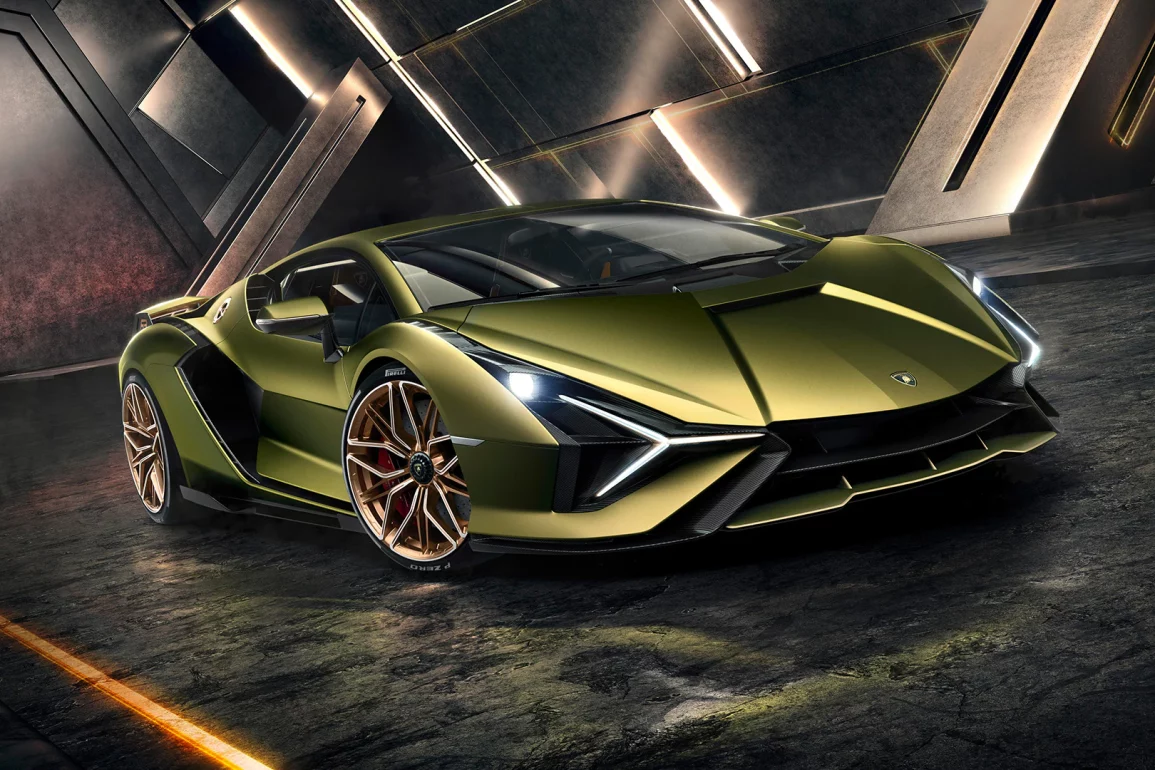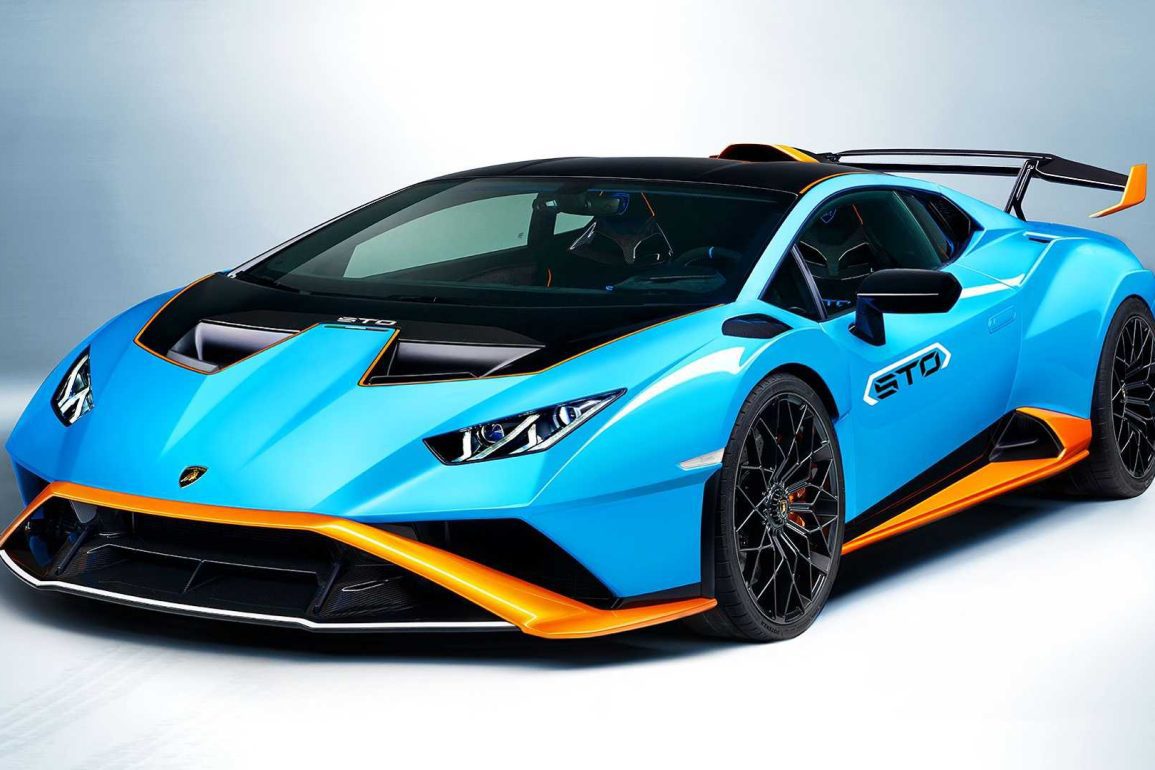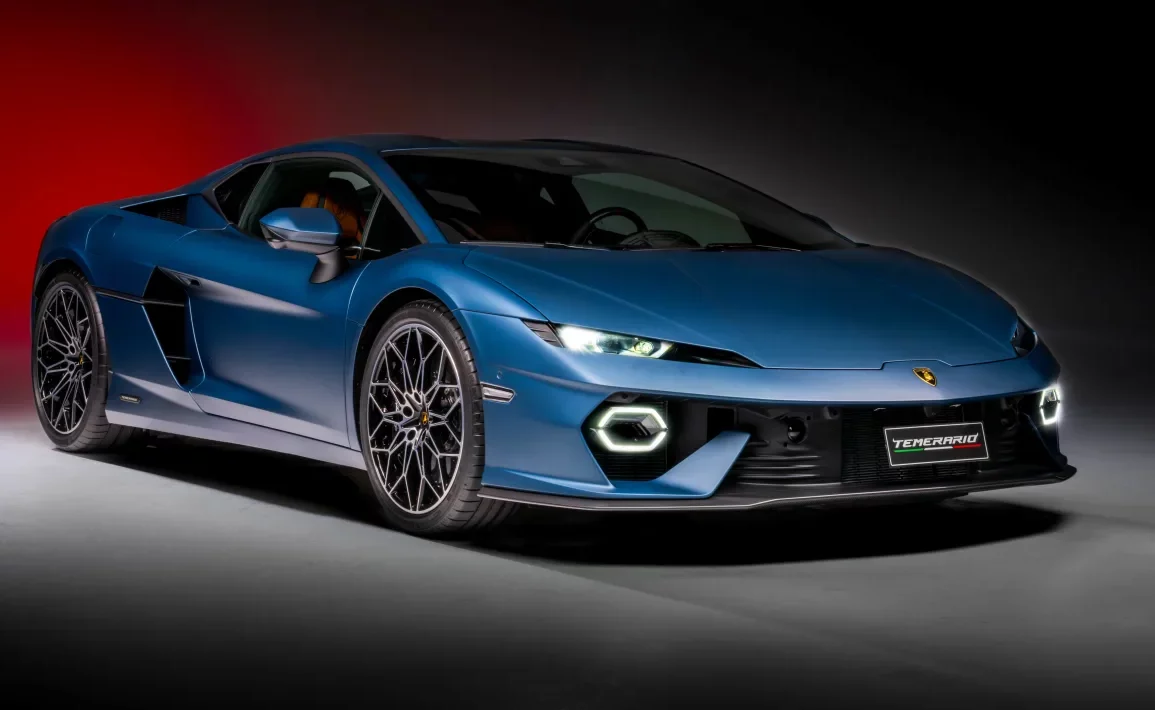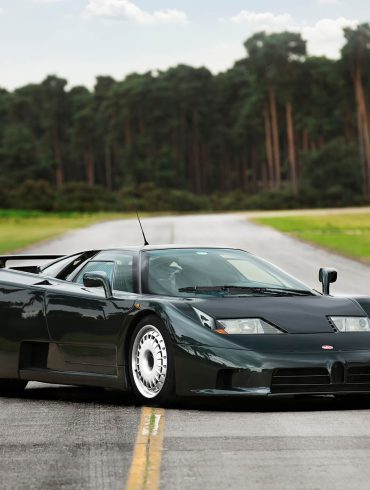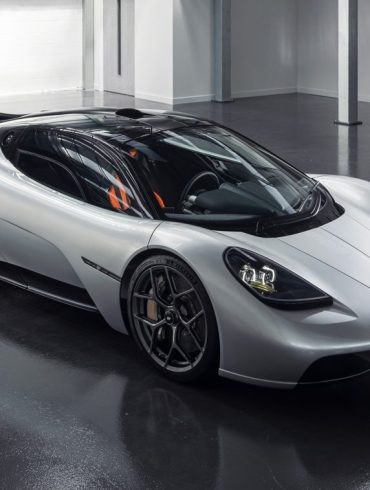The Greatest Lamborghinis Of All Time
The Raging Bulls, Here Are The Best Lamborghinis Ever Made
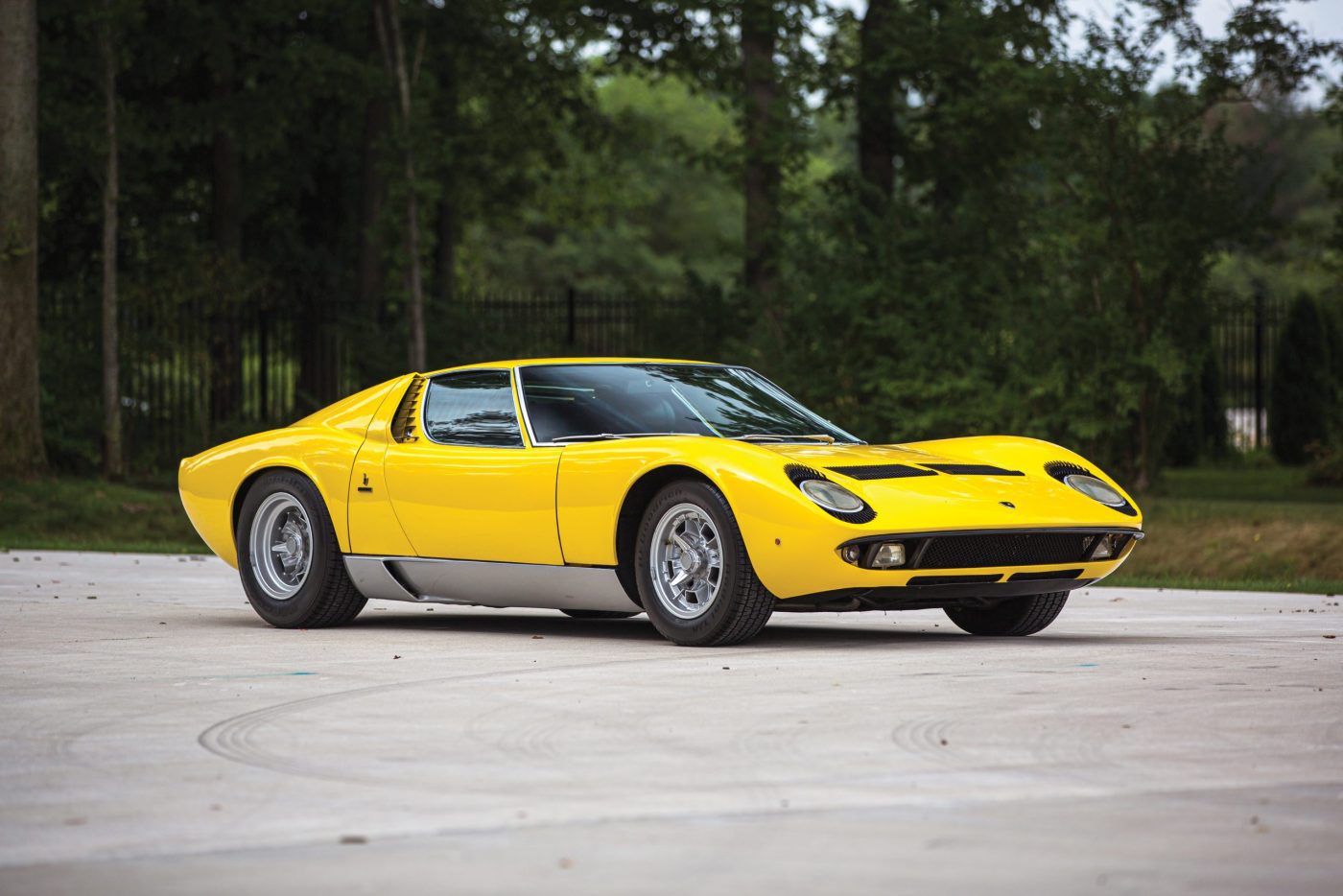
Lamborghini has produced some of the most iconic automobiles in history
Article Quick Nav
About Our Selections
Lamborghini, the raging bull marque, has been associated with speed and luxury for over five decades. The Italian automaker has created some of the most legendary automobiles in history. Among the Lamborghinis ever produced, a few truly stand out. The Miura, often hailed as the world's first supercar, captivated enthusiasts with its mid-engine layout and stunning design.
During the 1970s, the Countach took the world by storm, pushing boundaries in terms of innovation and speed. The Aventador and Huracán have recently carried on Lamborghini's tradition of delivering exhilarating performances. With their mighty engine's bold aesthetics and state-of-the-art technology, these Lambos are a dream come true for any car enthusiast.
Known for their breathtaking designs, roaring engines, and raw, unfiltered performance, Lamborghinis are more than just cars—they’re rolling works of art that embody the spirit of rebellion and innovation. In this article, we'll explore the best Lamborghini cars ever made, from iconic classics to modern masterpieces like the Aventador SVJ that continue to push the boundaries of speed and technology.
What makes Lamborghinis so amazing is their ability to blend extreme power with unmatched style, making every drive feel like an event. Each model is a statement of boldness, combining aggressive design, advanced engineering, and an unmistakable soundtrack that sets Lamborghini apart from the rest.
Lamborghini Jalpa
The forgotten V8 Lambo
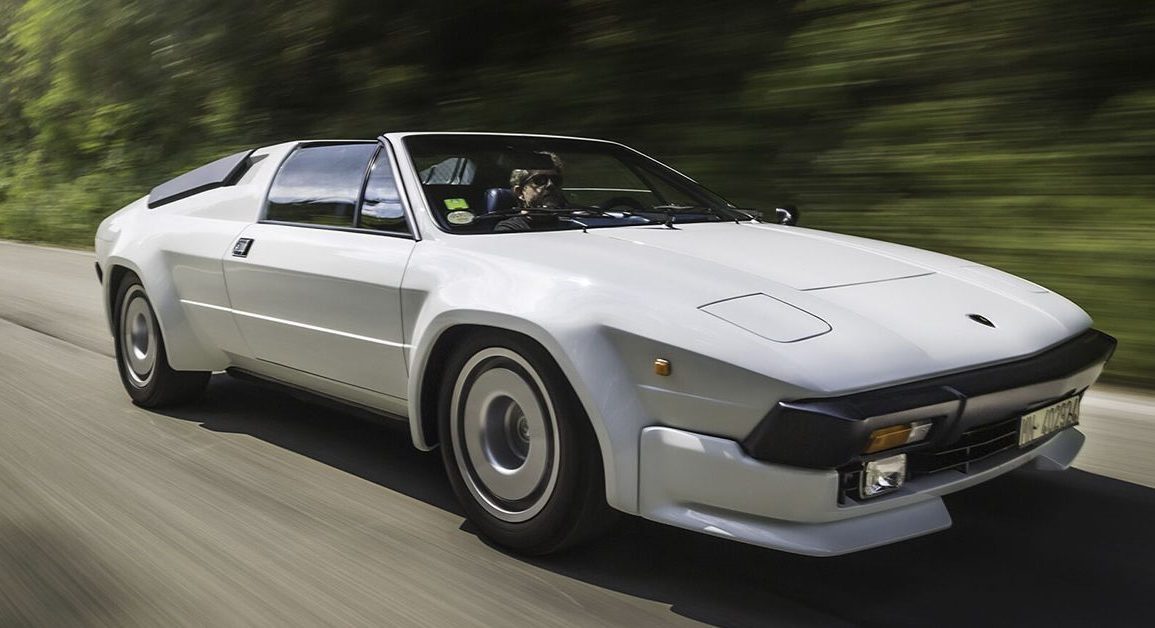
Why We Picked It:
The Jalpa, introduced at the Geneva Motor Show in 1981, was a natural progression from the Lamborghini Silhouette. It featured numerous technological advancements, the most notable of which was the 90-degree V8 engine's final metamorphosis into an all-aluminum, chain-controlled design. Lamborghini increased displacement from 3.0 to 3.5 liters for the Jalpa's engine to improve everyday handling and driving comfort.
In the Jalpa, Lamborghini used a variant of their 3.5-liter double overhead camshaft engine from the Silhouette. In the European version of the Jalpa, the powerplant generated 255 horsepower and 225 pound-feet of torque at 4,000 rpm. The engines included in the American models produced 250 horsepower.
Four downdraft twin-barrel Weber 42 DCNF carburetors were utilized to control the fuel flow. The Jalpa, in contrast to the Silhouette, had a completely different body that Bertone once more created and designed.
Specifications:
Price: $65,000-$120,000
Engine: 4.0L Twin-Turbocharged V8
Power: 710 hp
Torque: 568 lb-ft
Transmission: 7-Speed Semi-Automatic
Curb Weight: 2,932 lbs
Highlights:
The Jalpa, named after a famous fighting bull breed, entered production in 1982 and was available until 1988.
Despite being frequently overlooked amidst V12 Lambos, the Jalpa is remembered for its exhilarating and genuinely exciting driving experience.
Learn More:
Lamborghini Huracán
Puro Lambo fun
Why We Picked It:
Following Gallardo's retirement, Lamborghini made the Huracán its entry-level model, positioning it only beneath the Aventador. The Gallardo was the company's best-selling vehicle, so it had huge shoes to fill.
With the help of its 7-speed dual-clutch transmission and all-wheel drive, the Huracán LP610-4, which was based on an upgraded version of the 5.2-liter naturally aspirated V10 seen in the previous model, produced 610 horsepower right out of the gate and reached 60 miles per hour in 2.9 seconds. There is no option for a manual transmission, just like with the Aventador.
Despite being in production for only three years, the Huracán had already proven a dependable performer. The initial street-legal iteration of the car intended for racing was called the Performante.
Because the Huracán has adopted the Gallardo's distinctive and extroverted wedge-shaped design, it appears somewhat restrained and subdued compared to the Aventador. Nevertheless, the Huracán doesn't hesitate to make an impression and is available in many striking exterior and interior color schemes and patterns.
Specifications:
Price: $267,000
Engine: 5.2L V10
Power: 640 hp
Torque: 442 lb-ft
Transmission: 7-Speed Automatic
Curb Weight: 3,194 lbs
Highlights:
The Huracán features an aggressive and functional design, offering better downforce and stability at high speeds. The front splitter, rear diffuser, and redesigned rear spoiler contribute to the car’s impressive aerodynamic performance.
The car can accelerate from 0 to 62 mph (0–100 km/h) in just 2.9 seconds, with a top speed of approximately 202 mph (325 km/h).
Learn More:
Lamborghini Reventón
A fighter-jet inspired Lambo
Why We Picked It:
The Lamborghini Reventón was introduced in 2007 and was the most expensive Lambo ever, with only 20 units ever produced. It was based on the LP640 Murciélag, so the Reventón specs are identical; however, the exterior and interior aim to resemble those of an F15 Fighter Jet.
Per Lamborghini tradition, the vehicle was named after a fighting bull. The Reventón gained notoriety in 1943 when it killed renowned Mexican bullfighter Felix Guzman.
It has a 6.5-liter naturally aspirated V12 engine pumping out 650 horsepower, slightly higher than the Murcielago. The use of carbon fiber composites has made this increase possible. The Reventón has the same all-wheel-drive system as the Murciélago, a 6-speed e-gear semi-automatic gearbox.
The exterior of each Reventón was painted in a gray tone similar to those used on F15 fighter jets. The interior of the Reventón features a state-of-the-art TFT liquid crystal dash display with an aerospace-inspired design and the ability to switch between a digital display and a display that is more analog-like with the push of a button.
Specifications:
Price: $1,900,00-$2,900,000
Engine: 6.5L V12
Power: 650 hp
Torque: 486 lb-ft
Transmission: 6-Speed Automatic
Curb Weight: 3,726 lbs
Highlights:
The Lamborghini Reventón suspension features, among other things, a 4-wheel independent articulated quadrilateral system, hydraulic shock absorbers, and coaxial coil springs.
The Reventón does 0-60 mph in 3.4 seconds and has a top speed of 211 mph.
Learn More:
Lamborghini Urus
The first super-sport utility vehicle
Why We Picked It:
Lamborghini's first foray into the SUV market was with the Urus. They said it was the first of its kind, a premium sport utility vehicle where extreme performance meets high levels of comfort and adaptability. It had the best handling and acceleration of any SUV on the market.
The Urus drives better than any other SUV and is definitely the performance pick in that segment. On the inside, the Urus has decent luggage space and a generous helping of electronics and infotainment equipment. The Urus looks aggressive and has just the right level of Lambo styling cues without going overboard.
Lamborghini has unveiled the Urus S and Urus Performante variants of their SUV lineup for 2023. With 657 horsepower, the Urus S is a direct replacement for the base Urus and an increase of 16 horses over the outgoing Urus. The Urus Performante replaces the Urus and Urus S as the brand's flagship model. A 4.0-liter, twin-turbocharged V8 under the hood cranks out 657 ponies and 627 lb-ft of twist.
Specifications:
Price: $200,000-$233,000
Engine: 4.0L Twin-Turbocharged V8
Power: 657 hp
Torque: 627 lb-ft
Transmission: 8-Speed Automatic
Curb Weight: 5,200 lbs
Highlights:
The Lamborghini Urus can accelerate from 0 to 60 mph in just 3.3 seconds and reach a top speed of 190 mph.
The Urus Performante is around 104 lbs lighter than the Urus S variant, making it faster than the Urus S despite having the same engine.
Learn More:
Lamborghini Countach
The supercar that changed the industry
Why We Picked It:
Lamborghini's design DNA can be traced back to the Countach, which was produced fifty years ago; when challenged to create the Lamborghini of the future, designers at the Centro Stile in Sant'Agata still look to the standards set by the Countach.
With the advent of the avant-garde Countach, the trend for every Lamborghini model afterward was set, and the single line from front to back would define every new model from Sant'Agata for decades. The name "Countach" actually translates to a swear word. Countach is a swear word in the Piedmontese dialect
The first Countach generation was named LP 400. The engine was initially planned to be a 5-liter V12 good for 440hp, but overheating and reliability problems forced Lamborghini to settle on its proven Bizzarrini-designed 3929cc V12.
The engine was mounted longitudinally with the five-speed manual gearbox and clutch in front of the engine, sending the power to the rear wheels through a driveshaft running inside the dry engine sump transfers.
Specifications:
Price: $900,000-$2,000,000
Engine: 4.0L V12
Power: 325 hp
Torque: 260 lb-ft
Transmission: 5-Speed Manual
Curb Weight: 2,860 lbs
Highlights:
2021 marked the 50th anniversary of the debut of the legendary Lamborghini Countach, a futuristic prototype first shown at the Geneva Motor Show in 1971.
The total output of the Countach was 325 bhp and 260 ft-lbs, leading to a very quick 0 to 60 mph in around 5.9 seconds and a top speed of 181 mph
Learn More:
Lamborghini GT 350
Lamborghini's first production car
Why We Picked It:
The Lamborghini 350 GT was the brand's first production model and was an immediate success. The first vehicle Lamborghini ever produced, the 350 GTV prototype, sent the business on an incredible, quick-to-progress journey from concept to reality.
The final model had many of the same features as the concept 350 GTV, such as Scaglione's aluminum body, a quad-cam V12 engine, and a four-wheel independent suspension. The 350 came with Bizzarrini's intended V12 engine. It was a capable power unit, with 270 horsepower at 6,500 rpm and 239 lb-ft at 4,000 rpm. In contrast to the GTV prototype, which had issues with clearance, the 350 engine was designed with side-mounted carburetors to lower the engine's height.
The Lamborghini 350 was a success all around. Strong vehicle sales guaranteed the companies' existence and cleared the path for other variants. As far as Ferrari was concerned, a new rival had emerged. One that, in just two years, produced a product that matched Ferrari's performance by utilizing an abundance of skill.
Specifications:
Price: $530,000-$900,000
Engine: 3.5L V12
Power: 270 hp
Torque: 239 lb-ft
Transmission: 7-Speed Automatic
Curb Weight: 3,600 lbs
Highlights:
Audi Sport GmbH is offering a Torque Rear mode on the R8 for the first time. Drivers can access seven characteristic curves stored in the traction control system (ASR) offering different levels of support.
According to Audi, the R8 is capable of a 0–60 mph time of 3.4 seconds and a top speed of 198 mph.
Learn More:
Lamborghini Diablo
Pushing performance boundaries
Why We Picked It:
Automobili Lamborghini began planning a successor to the renowned Countach in June 1985; the new supercar, the Diablo, was not released to the public until June 1990.
Diablo's principal requirement was straightforward: the Countach's successor had to be capable of at least 315 Km/h. Marcello Gandini, who also worked on the Miura and the Countach, was the natural choice to design the exterior of the next Lamborghini. However, his original concept underwent changes, initially under his guidance and then by the Chrysler Styling Center in Detroit. Back then, Chrysler was the proud owner of Automobili Lamborghini.
A more humane, functional, nonviolent, and nonaggressive design was implemented. Still, Marcello Gandini felt comfortable enough signing the car's side because of the general likeness to his designs.
Diablo's powertrain comprised a naturally aspirated 5.7 V12, producing an impressive 492 horsepower and 428 lb-ft of torque. Power was sent to the rear wheels via a six-speed manual gearbox.
Specifications:
Price: $350,000-$1,000,000
Engine: 5.7L V12
Power: 492 hp
Torque: 428 lb-ft
Transmission: 5-Speed Manual
Curb Weight: 3,474 lbs
Highlights:
Lamborghini used composites like high-strength alloy for the passenger cell, engine cover, and front lid. The body still uses aluminum alloy in most parts.
The Diablo could go from 0 to 60 mph in 4.09 seconds and reach a top speed of 204 mph.
Learn More:
Lamborghini Espada
The first front V12 Lambo
Why We Picked It:
The Lamborghini Espada 400 was a four-seat grand tourer made for ten years, starting in 1968. It sold alongside the amazing Lamborghini Miura. The Espada 400 car was designed by Marcello Gandini at Bertone. The Marzal concept car served as the source of inspiration for the original dashboard design.
It used a monocoque steel body with fully independent suspension (it even had double wishbones, coil springs, hydraulic shock absorbers, and anti-roll bars, which was amazing in the day).
A V12 engine with six Weber side-draft carburetors and 24 valves controlled by two chain-driven overhead camshafts per bank powered the Lamborghini Espada, which was far ahead of its time. The gearbox was mounted in a block with the engine.
The Espada was designed by Marcello Gandini of Bertone, and it featured a sleek, aerodynamic body with a long hood and a short rear deck. A 3.9L or 4.1L V12 engine and a five-speed manual transmission provided the car's power. The Espada became Lamborghini’s bestseller from 1968 to 1978.
Specifications:
Price: $80,000-$105,000
Engine: 3.9L V12
Power: 325 hp
Torque: 265 lb-ft
Transmission: 5-Speed Manual
Curb Weight: 3,300 lbs
Highlights:
The Lamborghini Espada was named after the Spanish word for "sword." The swords of the Spanish matadors inspired the car's aggressive design and powerful performance.
The first series, Lamborghini Espada, completed the 0 to 60 mph in 7.8 seconds and had a top speed of 152 mph.
Learn More:
Lamborghini Veneno
The homologated beast
Why We Picked It:
Lamborghini celebrated its half-century jubilee by unveiling a special edition vehicle at the 2013 Geneva Motor Show. The Lamborghini Veneno was limited to just three examples. The Veneno has the dynamic feel of a racing prototype thanks to its design's constant attention to optimal aerodynamics and cornering stability, yet it was fully homologated.
The Veneno's design was meticulously thought out to achieve specific goals, such as its unparalleled dynamics, optimal downforce with low drag, and flawless, high-performance engine cooling. Despite its extraordinary dimensions, the Veneno is obviously a Lamborghini thanks to its arrow-shaped front end, sharp lines, and smooth surfaces.
With a displacement of 6.5 liters, the twelve-cylinder engine is a thrilling blend of total high-rpm frenzy and exceptional pulling power. With the help of longer air intake tubes, better thermodynamics, a slightly higher top speed, and a more efficient exhaust system with less back pressure, its output has been increased to 750 horsepower.
All-wheel drive, pushrod suspension, and the ISR manual gearbox have been fine-tuned to perfection for the Veneno.
Specifications:
Price: $4,500,000
Engine: 6.5L V12
Power: 750 hp
Torque: 508 lb-ft
Transmission: 7-Speed Auto-Manual
Curb Weight: 3,285 lbs
Highlights:
The Veneno meets all safety and registration requirements worldwide and naturally incorporates a full complement of safety systems, from airbags to the adapted ESP handling system.
The Lamborghini Veneno accelerates from 0 to 60 mph in just 2.8 seconds, and the top speed for this street-legal racing car stands at 220 mph.
Learn More:
Lamborghini Miura P400
The world's first supercar
Why We Picked It:
Known as the world's first supercar, the Lamborghini Miura P400 is an absolute marvel of Italian craftsmanship. The Miura P400's mid-mounted, 4.0-liter V12 engine, which produces a spine-tingling 350 horsepower, is hidden beneath its streamlined, aerodynamic body. A manual 5-speed transmission matched this engine. The Miura was the world's fastest-production automobile when it was introduced.
The innovative design of the Miura P400 was what really made it stand out. Marcello Gandini's design at Bertone, with its muscular, low-slung stance and characteristic "eyelashes" around the headlights, helped it become an immediate aesthetic symbol. Its interior featured an opulent and driver-focused cabin, a unique blend of luxury and performance.
The Miura P400, which debuted in 1966, revolutionized the supercar class and laid the foundation for today's exotic and powerful cars. Its rarity—only 764 pieces were made—adds to its charm and makes it a sought-after find among aficionados and collectors. A timeless classic, the Lamborghini Miura P400 has captured the hearts and minds of car enthusiasts for centuries.
Specifications:
Price: $990,000–$3,000,000
Engine: 3.9L V12
Power: 350 hp
Torque: 262 lb-ft
Transmission: 5-Speed Manual
Curb Weight: 2,862 lbs
Highlights:
The Ferrari Daytona, the Lancia Stratos, and the Miura were all designed by Marcello Gandini. The Miura's styling was stunning and practical, becoming an instant classic while raising the bar for future supercars.
The Miura was the fastest production car in the world, with a top speed of 163 mph and 0 to 60 mph in 6.3 seconds.
Learn More:
Lamborghini Countach 25th Anniversario
The last, and most complete Countach.
Why We Picked It:
To celebrate the 25th anniversary of the founding of Automobili Lamborghini SpA, the company gave us the ultimate Countach. This ‘celebration’ model was intended to be sold in limited numbers only, but it turned out to be the best selling Countach ever made reaching a total of 667 units before it was replaced by the long awaited Diablo in 1990.
The Anniversario was in fact a ‘new’ Countach, they redesigned as much as possible, but had to avoid new homologation for this model, so the base of the Anniversario was the then current QuattroValvole chassis. Only a few items remained from the QV, the front spoiler/bumper was redesigned, now with extra cooling vents for the front brakes, and sills were mounted with cooling streaks for the rear brakes like we already saw on the late 1988 QV models.
The space frame was also retained, but the suspension had to be slightly modified because of the new Pirelli P Zero tires replacing the aging P7R’s, now mounted on redesigned multi-piece OZ wheels. All these modifications made the Countach look less violent, the Anniversario would not shock anybody like the QV would, but with this latest evolution of the Italian super car.
Specifications:
Price: $500,000-$750,000
Engine: 5.0 L Nat Aspirated V12
Power: 455 bhp @ 7,000 rpm
Torque: 370 ft lbs @ 5,200 rpm
0-60 mph: 5.0 seconds
Top Speed: 183 mph
Highlights:
The scoops on the rear wings were redesigned, now much more incorporated into the shoulder, but still effective enough to keep the engine cool, which also received a new hood by the way.
The 25th Anniversary, or Anniversario in Italian, was the last and most agressive Countach. The exterior was redesigned by Horacio Pagani and the chassis updated with the help from World Rally Driving Champion Sandro Munari.
Learn More:
Lamborghini Diablo GT
A GT2 race car with all the outrageousness of the Diablo.
Why We Picked It:
In March 1999, at the Geneva Auto Show, Automobili Lamborghini SpA revealed their latest gem, the Lamborghini Diablo GT, to the world. The Diablo GT’s creation emerged from the experience gained from the Diablo GT2 prototype. This masterpiece featured aggressive bodywork and an actual race feeling. Modified suspension geometry and the use of composite materials not only gave it a lowered weight but also enhanced its high-speed stability.
From the standard Diablo, the GT had discernible differences. The enlarged front track made the wheel arches wider, creating a menacing stance. Almost every part of the body was designed to enhance aerodynamics. Every element screamed performance, from a dynamically controlled air intake on the engine cover to a redesigned rear bumper featuring two big exhaust pipes.
The aggressive look was crafted almost entirely from carbon fiber, adding to its aesthetics and weight reduction. The high-gloss carbon fiber finish of the large rear wing became a defining characteristic of the Diablo GT.
Under the hood, a 6 Litre V-12 engine roared to life, producing an impressive 575 Bhp, a significant power boost compared to the Diablo SV. By employing an ‘Individual Intake System’ with a single throttle for each cylinder and using a unique exhaust system with Lamborghini’s Exhaust Noise Control System (ENCS), this beast could reach nearly 340 Km/h.
Specifications:
Price: $600,000-$700,000
Engine: 6.0 L Nat Aspirated V12
Power: 575 bhp @ 7,300 rpm
Torque: 465 ft lbs @ 5,500 rpm
0-60 mph: 3.9 seconds
Top Speed: 210 mph
Highlights:
Only 80 examples of the GT were constructed, each in either orange, titan-silver, black or yellow bodywork. Depending on the customer’s use, each came with custom ratios, the longest of which offered a top speed of 215 mph.
Paramount to the exclusive peroformance of the GT was the larger engine which used a 4mm longer stroke to add 5% more displacement. With a new individually throated intake system, a reworked exhaust, titanium connecting rods and lighter crankshaft, 25 additional horsepower was realized.
Learn More:
Lamborghini Murciélago LP670-4 SuperVeloce
The ultimate, track-focused evolution of the Murciélago platform.
Why We Picked It:
At the heart of the Murciélago LP670-4 SV is a 6.5-liter naturally aspirated V12 engine that produces a staggering 661 horsepower and 490 lb-ft of torque. This incredible power allows the SV to accelerate from 0 to 60 mph in just 3.2 seconds and reach a top speed of 212 mph with the standard aero setup or 209 mph with the optional larger rear wing, which provides additional downforce. The "670" in its name refers to its metric horsepower output, while "4" signifies its all-wheel-drive system, ensuring maximum traction and stability even under extreme acceleration.
One of the standout features of the LP670-4 SuperVeloce is its extensive use of lightweight materials, making it around 220 lbs (100 kg) lighter than the standard Murciélago. Lamborghini achieved this weight reduction through the use of carbon fiber in the body panels, interior components, and even the exhaust system. This weight-saving effort, combined with the enhanced power, results in improved agility, handling, and acceleration, making the SV one of the most thrilling Lamborghinis to drive.
The Lamborghini Murciélago SV was widely praised by automotive reviewers for its raw, unfiltered driving experience and exhilarating performance. Top Gear described it as "utterly thrilling" and a "pure Lamborghini," emphasizing its extreme nature and relentless power. Evo Magazine highlighted the SV's improved handling, calling it a "more agile and responsive version of the Murciélago," while Motor Trend lauded its stunning acceleration and menacing design, stating that the SV represents "Lamborghini at its absolute best."
Specifications:
Price: $500,000–$600,000
Engine: 6.5 L Nat Aspirated V12
Power: 670 bhp @ 8,000 rpm
Torque: 478 ft lbs @ 6,500 rpm
0-60 mph: 3.2 seconds
Top Speed: 212 mph
Highlights:
LP670-4 Superveloce became a reality during the 2009 edition of the famous Geneva Auto Salon, a bright yellow example was unveiled on March 3rd during the official press conference held on the stand at 9:15.
Designed to be lighter, faster, and more aggressive, the Murciélago SV represents the pinnacle of the Murciélago model.
The Murciélago LP670-4 SV is an extremely rare car, with only 186 units produced.
Learn More:
Lamborghini Aventador SVJ
Pushes the boundaries of what a modern V12 supercar can achieve.
Why We Picked It:
The Lamborghini Aventador SVJ is the most extreme and track-focused version of the Aventador lineup, representing the pinnacle of Lamborghini's V12 engineering and performance capabilities. Unveiled in 2018, the Aventador SVJ takes Lamborghini’s legendary V12 supercar to the next level with enhanced aerodynamics, increased power, and advanced technologies.
At the heart of the Aventador SVJ is a 6.5-liter naturally aspirated V12 engine that produces an impressive 770 horsepower and 531 lb-ft of torque. This makes it the most powerful V12 engine ever fitted to a production Lamborghini. The engine’s high-revving nature and thunderous exhaust note create a visceral and thrilling driving experience, staying true to Lamborghini’s tradition of delivering raw, unfiltered performance.
One of the standout features of the Aventador SVJ is its Aerodinamica Lamborghini Attiva (ALA) 2.0 system, which represents Lamborghini’s most advanced active aerodynamics technology. This system uses a series of flaps and vents integrated into the car's bodywork that can adjust in real-time to optimize downforce or reduce drag depending on the driving situation. It worked. The Aventador SVJ set a record lap time of 6:44.97 at the Nürburgring Nordschleife, making it the fastest production car around the infamous German circuit at the time of its release.
Top Gear praised it as "the ultimate Aventador," highlighting its blistering speed and sharp handling. Car and Driver lauded the SVJ's ability to combine "track-focused engineering with Lamborghini's trademark flair," while Evo Magazine called it "one of the most thrilling V12 supercars ever," emphasizing its raw power and engaging driving dynamics.
Specifications:
Price: $500,000–$600,000
Engine: 6.5 L Nat Aspirated V12
Power: 770 bhp @ 8500 rpm
Torque: 531 ft lbs @ 6,750 rpm
0-60 mph: 2.8 seconds
Top Speed: 217 mph
Highlights:
The SVJ, short for SuperVeloce Jota, was a track focused variant that featured extensive weight saving measures as well as Lamborghini's 'ALA' active aerodynamics system.
As well as being lighter and generating more downforce, the SVJ features a 760hp version of Lamborghini's L539 6.5L V12 engine which sends drive to all four wheels via a 7 speed automatic transmission.
Production of the Lamborghini Aventador LP770-4 SVJ was limited to 900 examples.
Learn More:
Lamborghini Revuelto
Not only embraced the complexity of hybrid, but mastered it. A deeply exciting car to drive.
Why We Picked It:
Depending on who you ask, the new Lamborghini Revuelto may, or may not, have turned out to be exactly what you’d expect from the Italian automaker. But in any case, it’d have come very close. Two main reasons for this. One—it’s still got that textbook V12 internal combustion engine. Then secondly, it’s a plug-in hybrid.
The V12 is about as stereotypically Lamborghini as it gets, with a 6.5L naturally-aspirated powerplant stealing the show once again. On its own, the Aventador-derived internal combustion engine is able to produce 814 hp and 535 lb-ft of torque—as it turns out, this makes it the most powerful V12 the company has ever made.
So, on the electric front, it’s two motors driving each of the front wheels and a third providing assistance to the otherwise exclusively-ICE-powered rear axle. That makes three electric motors in total, which are powered by a 3.8 kWh battery and bring the all-wheel-drive Revuelto’s total power output to 1,001 hp. Lamborghini claims a 0-62 mph time of just 2.5 seconds, on the way to a top speed of 217 mph.
Top Gear praised the Lamborghini Revuelto for mastering the hybrid complexity, blending a 6.5-liter V12 with three electric motors to deliver an impressive 1,001 bhp. They highlighted its improved eight-speed twin-clutch gearbox, stating it’s a major upgrade from previous Lamborghini transmissions. The V12 engine remains the star, supported by the hybrid system without diminishing its raw power. The Revuelto was also commended for its refined ride, better handling, and increased practicality.
Specifications:
Price: Starting at $610,000
Engine: 6.5 L V12 + 3 Electric Motors
Power: 1,015 hp
Torque: 783 lb-ft
0-62 mph: 2.5 seconds
Top Speed: 217 mph
Highlights:
There are a plethora of drive modes—13 now in total—which cater to all sorts of situations you might find yourself in while piloting the Revuelto. Most notably, there’s Città mode which allows the car to drive silently whilst power is limited to 180 hp.
The Aventador replacement is now a plug-in hybrid. It features three electric motors. There is no reverse gear, that’s done electrically.
The L545 engine is the lightest, most powerful 12 cylinder ever made by Lamborghini. It’s been rotated through 180 degrees thanks to the repositioned gearbox. “The hybrid is only there to support and encourage the best from that masterpiece of a V12”
Learn More:
Lamborghini Gallardo LP550-2 Valentino Balboni
A rear-wheel drive Gallardo is just what the doctor ordered.
Why We Picked It:
The Lamborghini Gallardo LP550-2 Valentino Balboni stands out as one of the most unique and driver-focused Lamborghinis ever made. Released in 2009, it was created to honor Valentino Balboni, Lamborghini's legendary test driver. This edition broke the mold by featuring a rear-wheel-drive configuration instead of the typical all-wheel-drive system, making it more agile and thrilling to drive, with a purer connection to the road.
At its core is a 5.2-liter naturally aspirated V10 engine that produces 542 horsepower and 398 lb-ft of torque, allowing the LP550-2 to accelerate from 0 to 60 mph in just 3.9 seconds and reach a top speed of 199 mph. The rear-wheel-drive setup, combined with a six-speed e-gear automated manual or an optional six-speed manual transmission, made the driving experience raw and exhilarating, appealing to enthusiasts who value skillful driving. The car's suspension was specifically tuned to handle the rear-wheel-drive layout, providing a more tail-happy, playful driving character compared to its all-wheel-drive siblings.
With only 250 units produced, the LP550-2 Valentino Balboni is a rare and highly sought-after collector's item. It was widely praised for its engaging driving dynamics, with many enthusiasts and reviewers highlighting the car's return to Lamborghini's roots of producing rear-wheel-drive, driver-focused sports cars.
Specifications:
Price: $100,000–$150,000
Engine: 5.2 L Nat Aspirated V10
Power: 550 bhp @ 8,000 rpm
Torque: 398.3 ft lbs @ 6,500 rpm
0-60 mph: 3.7 seconds
Top Speed: 199 mph
Highlights:
The LP550-2 Valentino Balboni features several distinctive design elements that set it apart. It has a unique white and gold stripe running down the center of the car, inspired by Lamborghini's classic models from the '70s.
Inside, there are exclusive touches such as a plaque bearing Balboni’s signature, special leather upholstery, and additional trim finishes, giving it a more personalized and luxurious feel.
Learn More:
Lamborghini Sesto Elemento
A lightweight carbon masterpiece.
Why We Picked It:
The Lamborghini Sesto Elemento is one of the most extreme and innovative supercars ever created, designed to push the boundaries of performance, technology, and lightweight engineering. Unveiled in 2010 at the Paris Motor Show.
One of the standout features of the Sesto Elemento is its exceptionally low weight, tipping the scales at just 2,202 lbs (999 kg). This was achieved through the extensive use of carbon fiber-reinforced plastic (CFRP) throughout the body, chassis, suspension, and even the interior. This lightweight construction not only enhances performance but also makes the Sesto Elemento one of the most agile and responsive supercars ever built.
The heart of the Sesto Elemento is a 5.2-liter naturally aspirated V10 engine, borrowed from the Lamborghini Gallardo Superleggera, producing 562 horsepower and 398 lb-ft of torque. Thanks to its ultra-lightweight design, the Sesto Elemento can accelerate from 0 to 60 mph in just 2.5 seconds, making it one of the fastest accelerating cars in Lamborghini's history. The top speed exceeds 186 mph, showcasing the car's extraordinary performance capabilities.
Only 20 units of the Lamborghini Sesto Elemento were produced, making it one of the rarest and most exclusive models ever created by the brand. As a track-only car, it was never intended for road use.
Specifications:
Price: N/A
Engine: 5.2 L Nat Aspirated V10
Power: 562 bhp
Torque: 398.3 ft lbs
0-60 mph: 2.5 seconds
Top Speed: 221 mph
Highlights:
The large air intakes, exposed carbon fiber, and hexagonal shapes are a visual reminder of its lightweight philosophy. The interior is stripped down to the essentials, with no traditional seats; instead, the seating positions are molded directly into the carbon fiber tub, reinforcing the car’s commitment to weight reduction.
this limited-production masterpiece is named after the "sixth element" of the periodic table, which represents carbon.
Learn More:
Lamborghini Sián FKP37 (Coupe)
A lot more than just a fancy limited edition.
Why We Picked It:
The special limited-edition model features a naturally aspirated 6.5-liter V12 and a mild hybrid system. All told the powertrain puts out a whopping 808 hp.
As far as hybrid systems go, this one isn’t super advanced. The car utilizes a 48-volt, 34 hp electric motor that is connected to the gearbox and helps with a more immediate response. Lamborghini says the placement of the electric motor and how it’s connected to the wheels is a first in the industry. The electric motor also functions in low-speed maneuvers so reversing and parking lot maneuvers will be performed under electric power alone.
What’s more interesting than the small electric motor is the fact that Lamborghini didn’t use a lithium-ion battery pack. Instead, the company created a supercapacitor. According to Carscoops, this power unit is three times more powerful than a battery of its weight. Combined, the electric motor and supercapacitor weigh just 75 pounds.
With the newfangled hybrid system and the revamped 6.5-liter V12 engine, the car is able to do a 0-62 mph sprint in just 2.8 seconds. The car’s top speed is over 217 mph. The regenerative braking has the ability to fully recharge the supercapacitor in full, adding to the electric motor’s capability to assist the engine at speeds under 80 mph.
Specifications:
Price: $3,600,000
Engine: 6.5 L Nat Asp V12 + 48-volt e-motor
Power: 808 bhp @ 8,500 rpm
Torque: 531 ft lbs @ 6,750 rpm
0-60 mph: 2.8 seconds
Top Speed: 210 mph
Highlights:
World-first use of supercapacitor in hybrid solution and unique materials-science application. Producing combined thermal and electric power of 819 hp (602 kW): the most powerful Lamborghini ever produced
Sián: meaning flash or lightning in Bolognese dialect, referencing the first electric application in a Lamborghini production car
Produced in a limited series of just 63 units, honoring the foundation year of Automobili Lamborghini.
Learn More:
Lamborghini Huracán STO Edition
The ultimate version of the V10 ‘Baby’ Lamborghini.
Why We Picked It:
As the name suggests, this car is the best of the GT3 race car and the Huracan road car. It’s the ultimate Huracan road car. The STO is based on the Huracan Evo. It’s a lightweight machine with the best aerodynamics the R&D department and Squada Corsa could put together.
As you can see just looking at the STO, there’s plenty of vents and channels for air to be moved around and even through the car. It has some of the most aggressive designs on a Lamborghini ever, and that’s saying something.
According to EVO, the car has a NACA duct incorporated into the rear of the curves of the car that is an air intake for the engine. It reduces static pressure losses by 30 percent. The integrated scoop at the top of the car further improves cooling at the rear of the engine bay.
Overall, downforce is increased by 53 percent, aero efficiency by 37 percent and there’s 13 percent of adjustable aer0-balance over a Huracan Performante. The STO gets a 631 hp 5.2-liter V10 engine with racing car throttle maps. The focus for this car is on top-end response. Gear shift speeds are said to be exceptional, too. There are three drive modes: STO (road driving), Trofeo (dry race track), and Pioggia (wet race track).
The car did a lap time at the Daytona Motor Speedway of 1:48.86, which is two seconds slower than the GT3 racing car on slick tires, and three seconds faster than the Huracan Performante. This is a fast car.
Specifications:
Price: $350,000 - $500,000
Engine: 5.2 L Nat Aspirated V10
Power: 640 bhp @ 8,000 rpm
Torque: 416 ft lbs @ 6,500 rpm
0-60 mph: 3.0 seconds
Top Speed: 193 mph
Highlights:
The term Cofango derives from the fusion of two Italian words: cofano (hood) and parafango (fender), coined by Automobili Lamborghini to describe the design solution in which the hood, fenders, and front bumper are integrated into a single component. This innovative system created by Lamborghini engineers is inspired by the Lamborghini Miura and the more recent Sesto Elemento, and on the STO is made entirely of very light carbon fiber.
Learn More:
Lamborghini Temerario
Lamborghini's latest and greatest machine. Will it be awesome. Yeah, it will be.
Why We Picked It:
We know it is cheating to include a car nobody has actually driven on this list... but... we just know it is going to be awesome so we're including it anyway.
The Lamborghini Temerario is an upcoming mid-engine plug-in hybrid sports car that was officially unveiled on August 16, 2024, as the replacement for the Lamborghini Huracán. The name "Temerario," meaning "fierce, courageous," follows Lamborghini's tradition of naming models after fighting bull.
Powering the Temerario is a 4.0-liter twin-turbo V8 engine paired with three electric motors, resulting in a combined output of 907 horsepower. This setup makes it more powerful than its predecessor, with Lamborghini stating that the car can achieve a top speed of over 340 km/h (210 mph) and a 0–100 km/h (0–62 mph) time of just 2.7 seconds.
The Temerario's hybrid powertrain is designed for both performance and efficiency, and it uses an adapted version of the eight-speed dual-clutch transmission from the Lamborghini Revuellto.
Specifications:
Price: Starting at approx $300,000
Engine: 4.0L Twin-Turbo V8 + 3 electric motors
Power: 907 hp
Torque: 590 lb-ft
0-60 mph: 2.7 seconds
Top Speed: 213 mph
Highlights:
It marks the return of a V8 mid-engined Lamborghini model, the first since the 1981 Lamborghini Jalpa, and is also Lamborghini's first turbocharged sports car.


